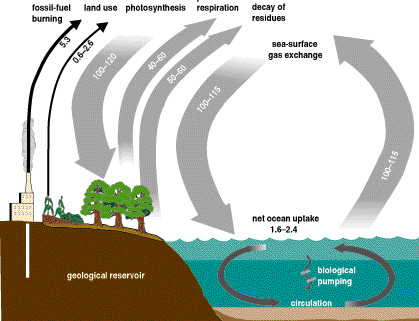Don’t Treat Your Marine Sediments Like Dirt
By Sander Elliot, SRC intern
Marine sediments are home to a surprisingly diverse ecosystem of global importance. Subseafloor Life and its Biogeological Impacts (D’Hondt et al., 2019) overviews this ecosystem and roles it plays. Marine sediments are often overlooked because they are removed from our daily lives. If one takes the time to look into these communities, they reveal themselves to be quite interesting. The very fact that life manages to survive in such a barren environment deprived of light and oxygen is fascinating on its own. However, they do more than survive – they thrive.
The article states that the total number of cells in marine sediments rivals that of those in terrestrial sediments as well as in the ocean as a whole. The cells in marine sediments tend to be necessarily smaller than their open ocean and terrestrial rivals, so the biomass of marine sediments is not close to that of soil or the ocean. Even so, that diversity of life in place that seems desolate is not to be taken lightly. These communities are also crucial to large scale biogeochemical cycles that have a huge effect on the planet as a whole. The article zeros in on five specific global effects of these communities.
Firstly, is the impact on the global redox budget. The ocean and atmosphere are oxidized by the burial of reducing material, and the marine sediment communities modulate this process, greatly affecting the redox state of the oceans. The exact extent of this affect is not entirely known, but figure 1 gives a broad outline of the various processes.

Figure 1. Various chemical processes in seafloor sediments that effect the global redox budget. (Source: D’Hondt et al. 2019)
The second outlined effect concerns the global sulfur cycle. This is also part of the redox budget, but the effects of the sulfur go beyond that. Sulfur is a vital to life, and marine sediments are a crucial step in the sulfur cycle. The third effect is on alkalinity and atmospheric CO2. The sulfuric reactions that effect the sulfur cycle also effect the alkalinity of the seawater. It turns out that the alkalinity of seawater is partially responsible for the partial pressure of CO2 in said water. The partial pressure determines how much CO2 is dissolved from the atmosphere into seawater. The carbon cycle is of great importance and interest in the midst of anthropogenic climate change. Figure 2 shows the sea surface gas exchange that is affected by the alkalinity of seawater.

Figure 2. A simple carbon cycle diagram that shows the gas exchange between the ocean and atmosphere. (Source: Wikimedia Commons).
The fourth impact is on the global nitrogen cycle. Marine sediments are a sink for most of the fixed nitrogen in the ocean, so they are the reason that many ocean ecosystems are nitrogen limited. The final impact is on geological resources. Microbial communities have a great affect on marine resourses of economic interest, specifically hydrocarbons. These affects need to be studied further but are known to be present. Marine sediments play a broad and crucial role in the earth’s biochemical cycles. They are an evolutionary marvel and proof that we are intricately connected to even the most far removed places in the biosphere.
Works Cited
D’Hondt S, Pockalny R, Fulfer VM, Spivack AJ (2019) Subseafloor life and its biogeochemical impacts. Nat Commun 10:1–13. doi: 10.1038/s41467-019-11450-z


